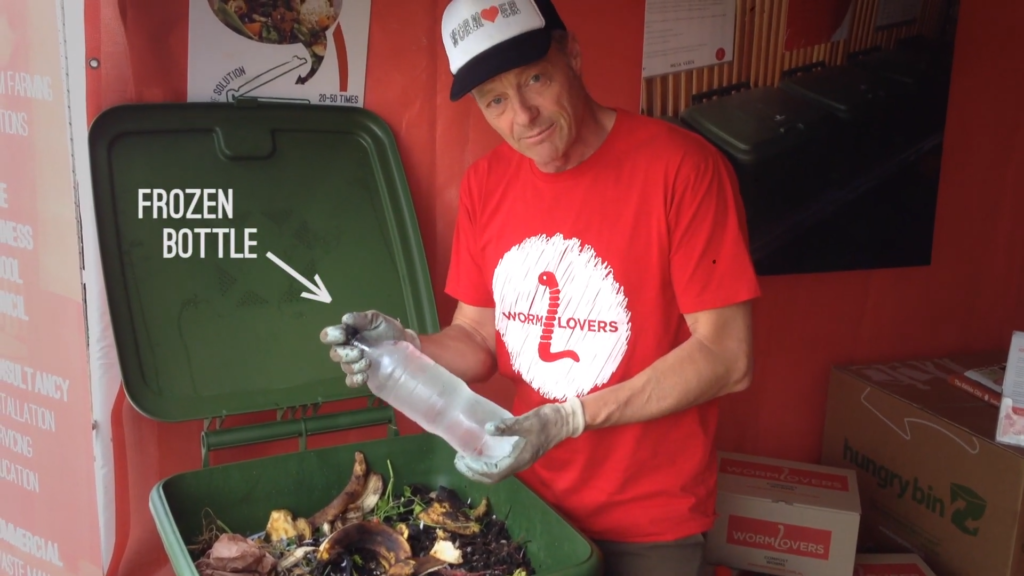As we move into another Aussie summer, we thought it timely to share some of the ways to keep your worms cool, happy, and healthy by sharing some strategies we have developed over years of managing worm farms through the hot months.
Compost worms can adjust to a wide temperature range, however bed temperatures much over 30C worms become stressed and can die if the temperature remains high for sustained periods.
Your worm farm has thermal mass making it slower than the surrounding air to heat up (but also slower to cool down). On a hot day followed by a cooler night your farm should be ok. On very hot days, or a string of 30C+ days with not much relief overnight, you should take action.
It is the temperature of the bedding, not the air temperature, that is critical
1: Location

Make sure your worm farm is located in the coolest place you can find, and never place it in direct sun. On the shadow side of the house, in the garage or even in the laundry will work – where it will remain cool in the warmest months.
2: Check the bedding

Keep a thermometer handy, preferably one with a probe that can reach well into the bedding of the worm farm (which will be the coolest part). If the temperature in the bedding is getting close to 30C you should take action to cool it down. The thermometer we supply includes a case to hang it from your worm farm to keep it close!
3: Cool it!

Prepare for action by keeping bottles of frozen water in your freezer – preferably 2 litre bottles. If the bedding temperature exceeds 30oC bury a frozen bottle in the top of the bedding. This will create a cool zone for the worms to shelter in.
Remove the bottle as it reaches ambient temperature and replace with a fresh frozen bottle if the bedding is still warm. Alternatively, you can also use esky coolant packs in the same way.
Avoid adding ice cubes on their own as once the ice melts the excess moisture can heat up quickly. To use ice cubes, keep it contained in a bag or plastic container and remove it once it melts.
4: Minimise food and water

Worms, like humans, tend to have a smaller appetite when it is hot. Feed the worm farms cautiously during hot weather as the feeding activity and the resulting biological processes can add to the heat in the bedding.
There should never be more than a couple of inches of uneaten food in the worm farm at any time. The excess food can heat up and create toxic conditions which will further stress the worms. Poorly functioning bins can suffer heat stress at lower ambient temperatures due to the internal heat being generated.
Avoid adding more water when the bins are hot, as excessive moisture can make it more difficult for the heat to escape.
5: Coolgardie worm farm
Another effective hot weather strategy is to cover the worm farm with a wet hessian sack or towel – this creates a cooler microclimate around the worm farm. Keep spraying water onto the covering as it dries out.
6: Holiday action

If you are going away for an extended period and are worried the worm farm may not stay cool on its own, consider transferring the active layer of castings which has the majority of worms in it into a large container with a lid and keeping it indoors in a cool place.
Add cardboard and harder foods like pumpkin skins and the worms should be safe for a couple of weeks. Just make sure you put them somewhere that will remain cool or you may come home to an unpleasant surprise!
In closing…

Finally, don’t be too discouraged if you lose your worms – while this is of course something we all want to avoid, enough worms will generally survive for the worm farm to recover. The castings will usually contain lots of worm eggs which will hatch once conditions improve.
We hope these tips help you help your worms survive the summer months!
